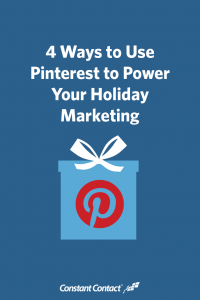
It’s kind of hard to remember a time before social media. News feeds and hashtags have only really become prevalent in the last decade, a little over, but it’s as if news of engagements, births, or, most importantly, political feuds, were never shared another way.
And yet, though Facebook and Twitter accounts have become second nature for most people, many don’t realize the full extent of social media tools they have at their disposal.
Take LinkedIn. Many professionals actively wonder whether or not they should be on LinkedIn. They ask themselves what the value of it is, if it’s worth their time. Many will tell you they don’t need more friends or to be spammed by people they don’t know.
Well, I have just one thing to say when it comes to using LinkedIn in the B2B space.
You’re missing out.
Okay, I lied, I have a bit more to say than that. But it all stems from that key point.
People don’t realize just how huge and powerful a business networking site LinkedIn has become, and just how many high quality contacts actively use it. Think of it as an industry specific networking event or trade show that’s open 24/7/365. I like to make the comparison that LinkedIn is like the nerdy kid brother of the major social networking sites, the one who’s easily overlooked in favor of the popular ones. But at the end of the day, he’s going to be the one who’s a millionaire at the age of 30, while Mr. Homecoming King becomes washed up, and reminisces on that one highlight of his life.
LinkedIn seems less exciting, less fun than Facebook, but that’s where you’re going to find value in social media. Facebook can be such a time sucker, but LinkedIn will give you a return on the energy and effort you put into it.
What exactly is that return? Well, there are many reasons that professionals should be active on LinkedIn:
First and foremost, you owe it to yourself to treat your personal brand and your career like your biggest asset. Because it is, and you need to continuously be investing and putting resources back into that asset.
The job market has changed so much over the past 10-15 years, and we’re seeing professionals work for many companies throughout their career. The amount of time someone spends in one role with one company has dramatically decreased—there’s a lot more movement happening. We therefore need to say to ourselves, “I don’t know where I’m going to be tomorrow or a year from now, so I’m going to make sure I look my best, and stay forever open to opportunities.”
The key way to do that is to keep your LinkedIn profile updated, optimized, current, and engaged. There are always opportunities on the web—even some you don’t even realize you’re looking for—and having a strong, relevant profile will allow you to be open to grabbing any that come your way.
There are 5 tips to keep in mind when considering how to best optimize your profile for great LinkedIn success.
- Use an appropriate photo.
I wish this didn’t have to be said, but let’s face it–it does. Your LinkedIn profile picture needs to represent you at your professional best. This doesn’t mean that you need to be in a suit and tie, but there are guidelines to follow. Look straight into the camera, don’t have others in the frame or crop someone out of a photo, smile, hold yourself with confidence. Just shoot the shoulder and up so that it’s a clear picture of your face. Bring your ‘A game’, and make sure that your picture looks personable.
This needs to be the professional representation of you in the form of an image. You want to be able to create quality relationships. To do so, people need to relate to you as if they were meeting you in person, to truly get to know you and look in your eyes, and the way to do that is through a great profile picture.
- Optimize the content on your profile, specifically the headline and summary.
The headline and summary are perhaps two most critical components of your profile, as they allow you to truly represent yourself. The headline follows you around LinkedIn, and will show up with your picture and name when you publish a post or comment on others. Don’t just list your title or role.
Instead, your headline should be a short but powerful sentence that sums up who you are in the professional sense, and demonstrates how you help others, who you help, and why you help them. Resist the temptation to make it about you, and instead make it about the people finding your profile. Basically, this sentence should sum you up and represent your current professional career and role within the character limit. No pressure, though 😉
Likewise to the headline, the summary should explain how you can help the person looking at your profile. Tell a story around what you do and why you love what you do. Again, make it about them. Make this a powerful statement not just about your own professional presence, but how it can benefit theirs.
One piece of advice for both the headline and summary is to use keywords. Whatever statement you’re trying to make, you want to think about the people that you serve, what they’re looking for, and what words they’re using to look for it. That will help them find you.
- This is not your resume.
Don’t let your profile become just a virtual representation of your resume, for the simple reason that resumes aren’t very exciting. They’re worthwhile as a succinct way of learning a lot about a person in a short amount of time, but LinkedIn offers the opportunity for more than just that.
Give potential connections the chance to truly get to know you by serving up information that they’re asking themselves about you, the information you want them to know about you. Help them qualify whether or not you might be a relevant connection for them.
- Position yourself for the job or opportunity you want.
Don’t limit this to explaining who you are in the current moment. Seek out opportunities to demonstrate expertise in what you’re looking to do in the future, how you want to grow, and what shape your future path should take. Whether that’s volunteering in a professional capacity, or contributing articles, you can shape your profile towards the direction you want to go with your career and towards opportunities you want to be seen as open for.
This isn’t lying to pad your resume. It’s more like dressing for the job you want, not for the job you have. So too, LinkedIn shouldn’t just be utilized when you want a new job; it can be working for you 24/7.
- Put your best foot forward
The beauty of the web lies in the art of perception. You are free to create and establish yourself how you want just by how you put yourself out there. So, just like having a great LinkedIn profile vs. an empty one will give people two different experiences of you, so too when you optimize your profile and take advantage of what you can do with your profile by taking the above steps, you can create the perception of yourself as successful, confident, a team player, an expert in the field, and opportunistic.
Always pay attention to how you’re coming across online through your LinkedIn profile.
Having a strong, optimized LinkedIn profile that truly represents you and demonstrates your thought leadership on industry matters can truly help establish your brand online.
Beyond just establishing your presence online, LinkedIn can also be actively valuable in helping you expand your reach. LinkedIn allows you to access the world’s professionals, and helps you search and connect directly with your target audience. You can get in front of your ideal customer base, and build a relationship with them exactly where they are—on the web.
We’re all for face-to-face contact, but trade shows only happen once or twice a year. You need to be doing something the rest of the year to meet your sales quota, and LinkedIn can be your single best effort in that sense.
The next benefit of LinkedIn is that, after you have your network, you can publish content to the site, building up your thought leadership. LinkedIn is one of the biggest publishing media sites in the world; they’ve truly built up the site as a strong source of relevant content for influencers and leaders in the field. Anyone can publish to LinkedIn, and once you build up a network, any content you publish will be pushed to all of those connections.
By continuing to demonstrate your expertise through this content, you’ll build up your thought leadership, which is a critical piece of online marketing. People want connection to a person, not just a brand, and thought leadership is the process of building out a personal brand for yourself online even if you are representing a company. LinkedIn is hugely valuable in helping you achieve that.
To further capitalize on this opportunity, join relevant groups connected to what you do and the industry you’re in. Groups are the perfect place to learn from peers and maybe teach them a thing or two. Post in groups, share content, look for opportunities to help people…the best mentality is to be super generous and open, to answer questions, provide feedback, and comment.
It will pay off, since people will see you, they’ll want to check you out further, and they’ll be more inclined to help you out down the road.
The above makes it pretty clear why someone should utilize LinkedIn. This isn’t just a vanity number of racking up connections—these are actual people listening to what you’re saying. This is a strategic, critical opportunity to create build up a targeted network.
However, despite that, many people have certain objections to LinkedIn, and I think they’re worth addressing.
- THIS IS NOT FACEBOOK. I get that people have objections to Facebook, whether it’s the privacy issues, sharing your whole life with people, or not wanting to create personal posts. I’m actually not a huge Facebook user myself – removing the app from my phone has done wonders for my productivity and outlook on life :). But LinkedIn—I’m on it multiple times a day. It’s a part of the business—we’ve had wonderful clients find us and contact us through LinkedIn! This isn’t social media for the sake of social; it’s a hugely valuable professional networking site. So don’t be turned off just because you’re not into Facebook or other social sharing sites.
- You’ll hear from many people you respect—colleagues, others in the industry, even large companies in the space–that they’re not on LinkedIn. Don’t let them impact how you feel—there’s a huge opportunity there, and you should take it. Just because they’re not there doesn’t mean that there aren’t a huge number of people who are there, who are active in your industry. Reach non-active people the same way you’ve utilized marketing in the past, pre-LinkedIn, but you should still take advantage of the site to reach NEW people.
- If someone rejects your connection because they haven’t met you in real life, don’t worry about it–this has nothing to do with you. They’re just playing small. When this happens to me, and I get a response to a connection request saying something along the lines of, “Do I know you…?” I just respond nicely, “No, we haven’t met; I came across your profile on LinkedIn and thought it would be valuable for us to connect. No problem if that’s not of interest to you.” Some people approach LinkedIn from an old school mentality, but I think that’s missing the point of utilizing modern technology to improve our lives and the lives of others around us. If you’re only going to connect with the people you know on LinkedIn, then what’s the value of the site? If you want to get in touch with someone you know, then use Facebook, use email. This is about finding new people to connect with, it’s about relationships that wouldn’t exist otherwise. Don’t get down if you get rejections; it’s their loss, and there are still plenty of opportunities out there.
- It’s not valuable to connect for the sake of connecting. You don’t have to have a million connections, you only need 1,000 real people and quality connections in your industry who are interested in knowing you. Always remember: quality over quantity any day.
The last thing I want to cover before you go off and start dominating LinkedIn is what to look for in a good connection. There are three key ways to know if someone is active on LinkedIn so that you don’t waste your time on those who aren’t active or engaged.
- Check that they have a profile picture on their profile. See above on the importance of a profile picture. If they haven’t even put up a picture, then chances are they aren’t doing much else.
- See if they have more than 500 connections. 500 is a milestone; after you hit that number, your connections will forever be shown as the number 500+, whereas until that point you just have the actual number of connections—which doesn’t look good if it’s, say, 158. So a) work on that yourself, getting 500+ connections (it’s easier than you think when you expand to colleagues, past coworkers, college acquaintances, etc..) and b) use that number to judge valuable worthwhile connections for yourself.
- Ensure that their profile isn’t empty. If their profile clearly hasn’t been filled in all the way, or if there hasn’t been recent activity, then it’s clear that this person hasn’t logged in a lot or isn’t updating. He might not even see the connection request in that case!
And so concludes our LinkedIn primer. The truth is I could go on even longer about the importance of utilizing this crucial tool. I hope that I’ve proven how important it is to be active—this site should really be a part of your daily work habits. It will open doors for you that you don’t even realize, and strengthen your individual presence and your company’s name for the right audience long-term.
Digital & Social Articles on Business 2 Community(125)





